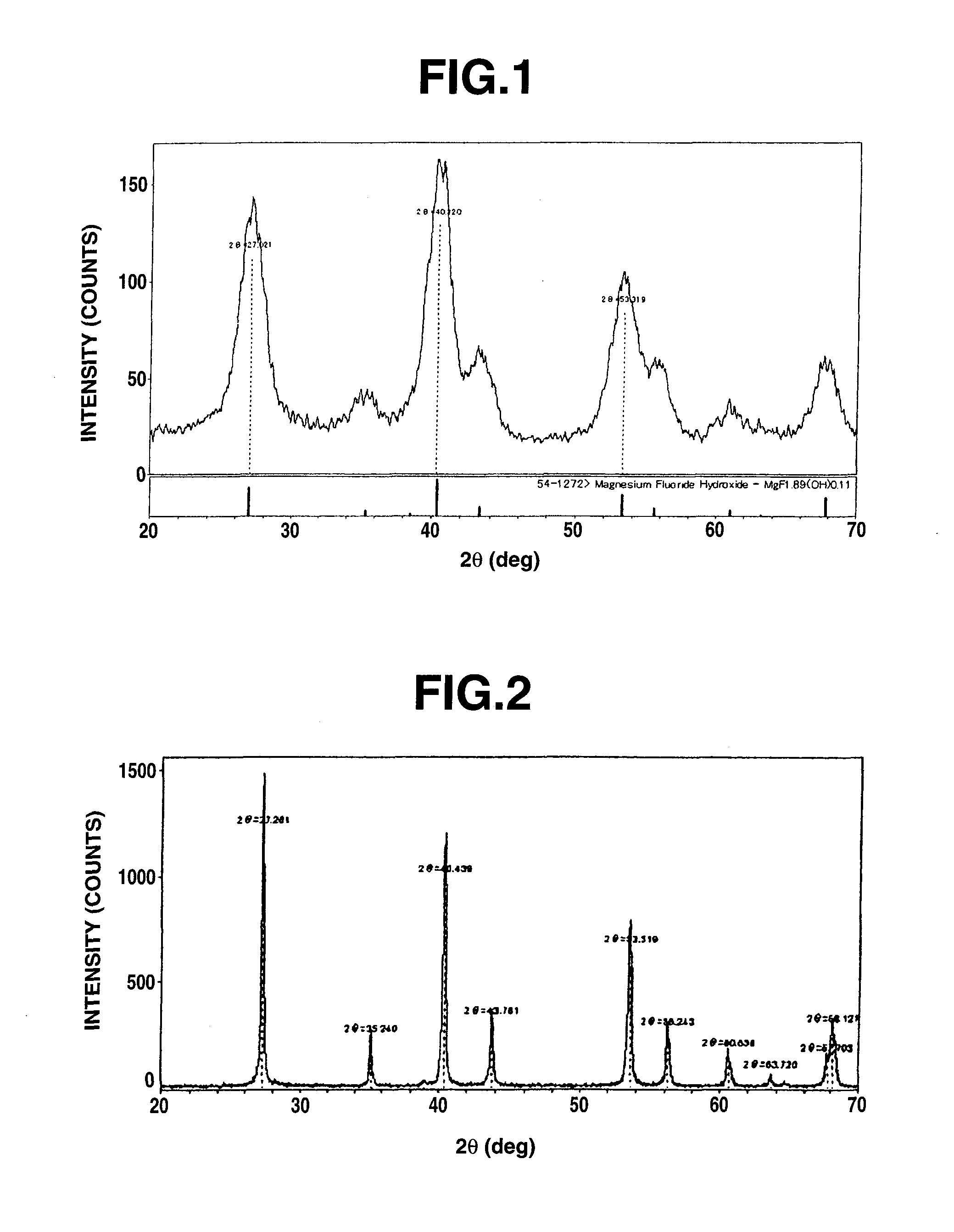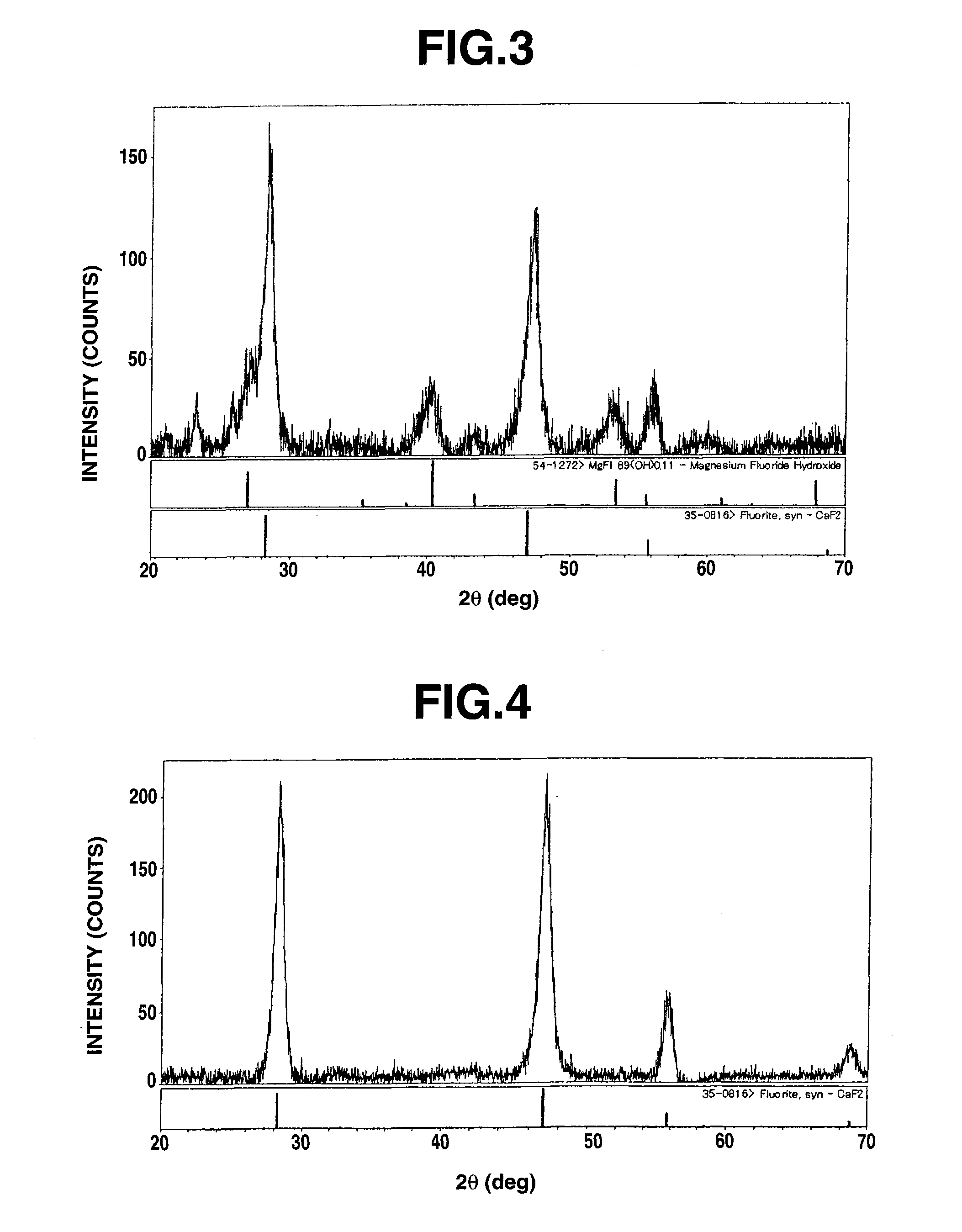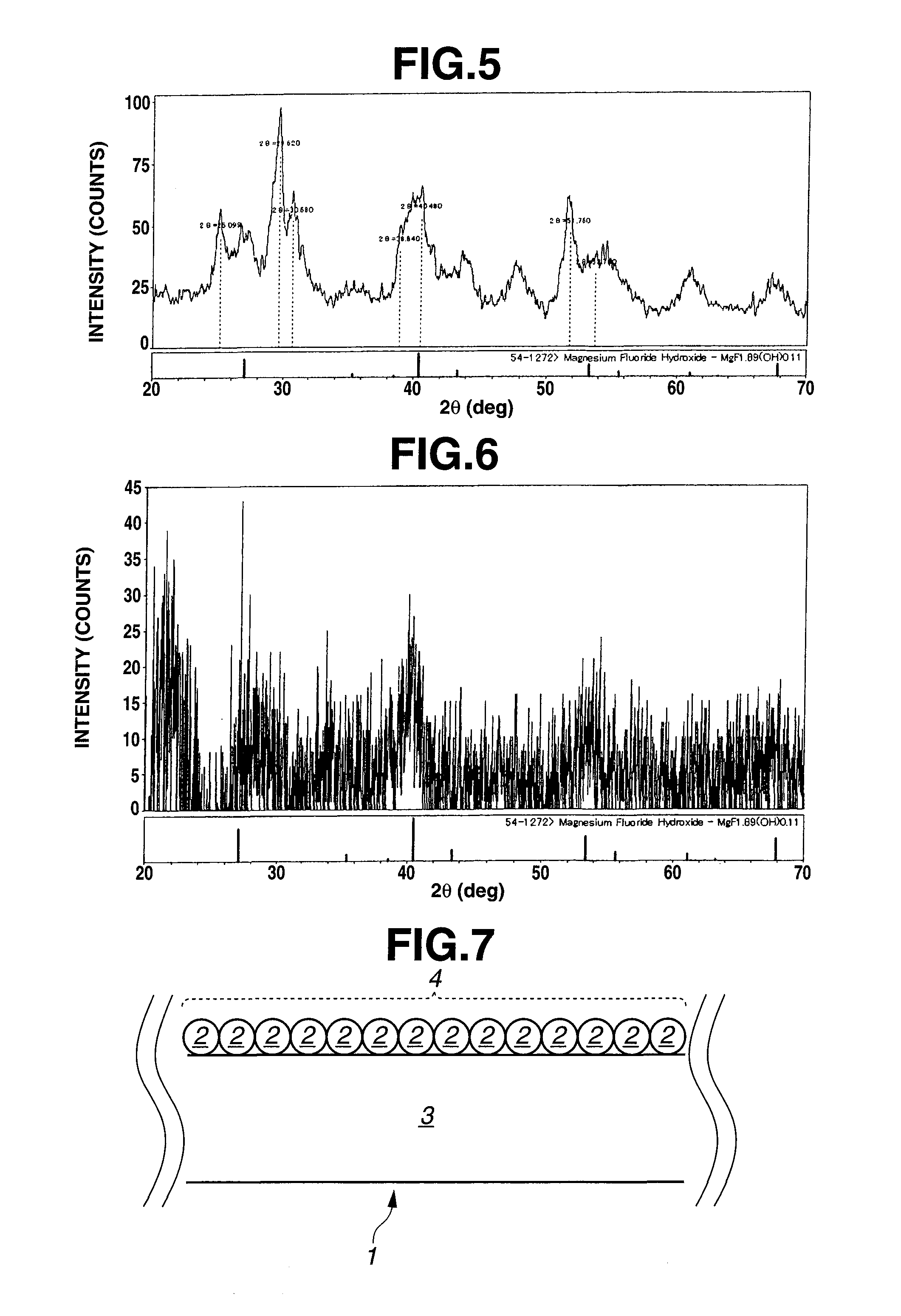Organosol Containing Magnesium Fluoride Hydroxide, and Manufacturing Method Therefor
a technology of magnesium fluoride hydroxide and magnesium fluoride, which is applied in the field of magnesium-containing organosols, can solve the problems of limited functional materials in the arena of functional materials
- Summary
- Abstract
- Description
- Claims
- Application Information
AI Technical Summary
Benefits of technology
Problems solved by technology
Method used
Image
Examples
example 1
Preparation of Organosol (Mg Compound Single Base)
[0276]Hereinafter, an example of preparation of an organosol based singly on Mg compound will be discussed with reference to “EXAMPLE 1-1” to “EXAMPLE 1-7”. A prepared organosol was dried at 120° C. and then subjected to diffraction with the use of a XRD instrument (available from Rigaku Corporation under the trade name of RINT-Ultima III) at a voltage of 40 kV, a current of 40 mA and a scanning angle of from 10 to 70°. As a result of this, there were observed a wide variety of peaks indicating an intensity of from about 50 to 160 cps and a halfwidth of from ±0.7 to ±1.2°. This implies that the substance is extremely low in crystallinity and that the substance is nearly noncrystalline rather than crystalline. Furthermore, an X-ray diffraction pattern obtained by this example matches with that of magnesium fluoride hydroxide (MgF1.89(OH)0.11) of JCPDS file 54-1272. An X-ray diffraction pattern of the organosol obtained in Example 1-1 ...
example 1-1
MgCl2.6H2O / IPA Base
[0277]16.46 g (0.173 mol) of reagent-grade magnesium chloride hexahydrate was dispersed in 150 ml of isopropyl alcohol (which may be referred to as IPA hereinafter) under a stirring condition at room temperature, thereby producing a suspension liquid in which magnesium chloride is dispersed. Then, 14.71 g (0.346 mol) of 47% hydrofluoric acid solution was added dropwise to the suspension liquid interruptedly over 10 minutes under the stirring condition at room temperature (HF / Mg=2.0). Subsequent to the dropwise addition of hydrogen fluoride, the suspension liquid was stirred continuously for 8 hours, thereby obtaining a cream-like transparent slurry. Ultrafine particles that existed in this solution had an average particle diameter of 20 nm. The thus produced sol was dried at 120° C. to obtain an X-ray diffraction pattern as shown in FIG. 1.
example 1-2
MgCO3 / EGME Base
[0278]17.331 g (0.188 mol) of reagent-grade magnesium carbonate was dispersed in 200 ml of ethylene glycol monoethyl ether under a stirring condition at room temperature, thereby producing a suspension liquid in which magnesium chloride is dispersed. Then, 16.35 g (0.417 mol) of 51% hydrofluoric acid solution was added dropwise to the suspension liquid interruptedly over minutes under the stirring condition at room temperature (HF / Mg=2.22). Subsequent to the dropwise addition of the hydrofluoric acid solution, the suspension liquid was stirred continuously for 8 hours, thereby obtaining a cream-like transparent slurry. Ultrafine particles that existed in this solution had an average particle diameter of 15 nm.
PUM
| Property | Measurement | Unit |
|---|---|---|
| particle diameter | aaaaa | aaaaa |
| contact angle | aaaaa | aaaaa |
| contact angle | aaaaa | aaaaa |
Abstract
Description
Claims
Application Information
 Login to View More
Login to View More - R&D
- Intellectual Property
- Life Sciences
- Materials
- Tech Scout
- Unparalleled Data Quality
- Higher Quality Content
- 60% Fewer Hallucinations
Browse by: Latest US Patents, China's latest patents, Technical Efficacy Thesaurus, Application Domain, Technology Topic, Popular Technical Reports.
© 2025 PatSnap. All rights reserved.Legal|Privacy policy|Modern Slavery Act Transparency Statement|Sitemap|About US| Contact US: help@patsnap.com



